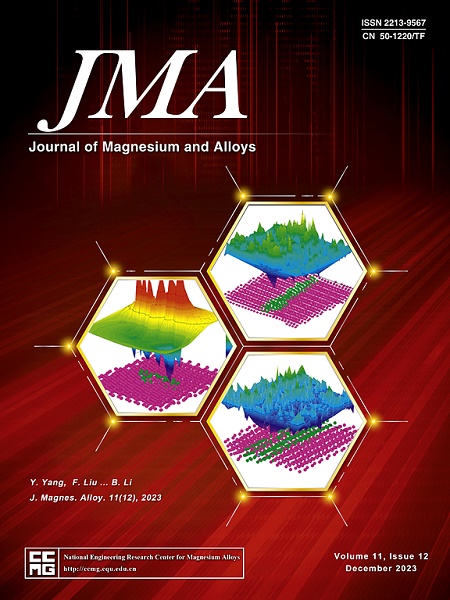Making magnesium from low-grade magnesite: Experimental verification and life cycle assessment
IF 15.8
1区 材料科学
Q1 METALLURGY & METALLURGICAL ENGINEERING
引用次数: 0
Abstract
China, as the world`s largest producer and exporter of metallic magnesium, there are plenty of manufactures in the western provinces using the silicothermic method known as the Pidgeon process. The raw material used is usually dolomite containing about 20 wt.% element Mg. Liaoning province in the northeast China has up to 87 % of the national magnesite reserves, which contains 2–4 times more element Mg than dolomite does. How to economically produce metallic magnesium using magnesite is thus of significance for not only the local industry but also the flexible production of metal magnesium. This study proposed a process to produce magnesium using low-grade magnesite and further validated the proposal through experiments. Models of life cycle analysis are in turn formulated to evaluate the energy consumption and economic performance of the entire process proposed by taking the required source data from the Chinese Life Cycle Database (CLCD). The data comprehensively consider a variety of process equipment, energy supply pathways and geographical environments. In comparison with the Pidgeon process, the proposed pathway exhibited the best economic performance through its utilizing low-grade magnesite as the raw ore containing Mg and coke oven gas from steelworks as the fuel.

低品位菱镁矿制镁:实验验证及生命周期评估
中国是世界上最大的金属镁生产国和出口国,西部省份有许多制造商使用被称为皮金法的硅热法。所使用的原料通常是白云石,含有约20wt .%的元素Mg。中国东北的辽宁省拥有全国87%的菱镁矿储量,其镁元素含量是白云岩的2-4倍。因此,如何利用菱镁矿经济地生产金属镁,不仅对当地工业,而且对金属镁的柔性生产具有重要意义。本研究提出了一种利用低品位菱镁矿生产镁的工艺,并通过实验进一步验证了该工艺。通过从中国生命周期数据库(CLCD)中获取所需的源数据,制定了生命周期分析模型,以评估整个过程的能源消耗和经济绩效。这些数据综合考虑了各种工艺设备、能源供应途径和地理环境。与Pidgeon工艺相比,该工艺以低品位菱镁矿为含镁原矿,以炼钢厂焦炉煤气为燃料,具有最佳的经济效益。
本文章由计算机程序翻译,如有差异,请以英文原文为准。
求助全文
约1分钟内获得全文
求助全文
来源期刊

Journal of Magnesium and Alloys
Engineering-Mechanics of Materials
CiteScore
20.20
自引率
14.80%
发文量
52
审稿时长
59 days
期刊介绍:
The Journal of Magnesium and Alloys serves as a global platform for both theoretical and experimental studies in magnesium science and engineering. It welcomes submissions investigating various scientific and engineering factors impacting the metallurgy, processing, microstructure, properties, and applications of magnesium and alloys. The journal covers all aspects of magnesium and alloy research, including raw materials, alloy casting, extrusion and deformation, corrosion and surface treatment, joining and machining, simulation and modeling, microstructure evolution and mechanical properties, new alloy development, magnesium-based composites, bio-materials and energy materials, applications, and recycling.
 求助内容:
求助内容: 应助结果提醒方式:
应助结果提醒方式:


